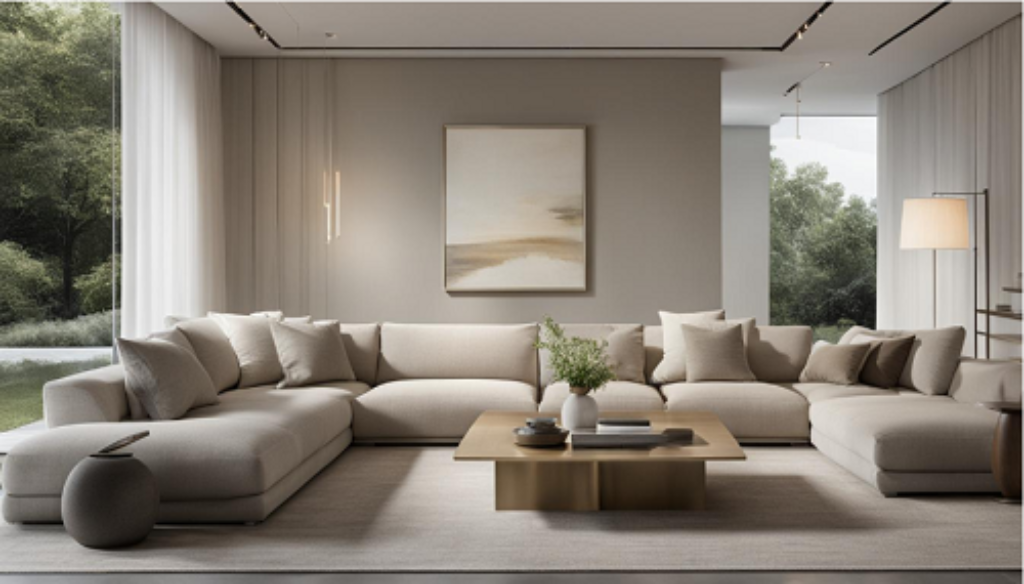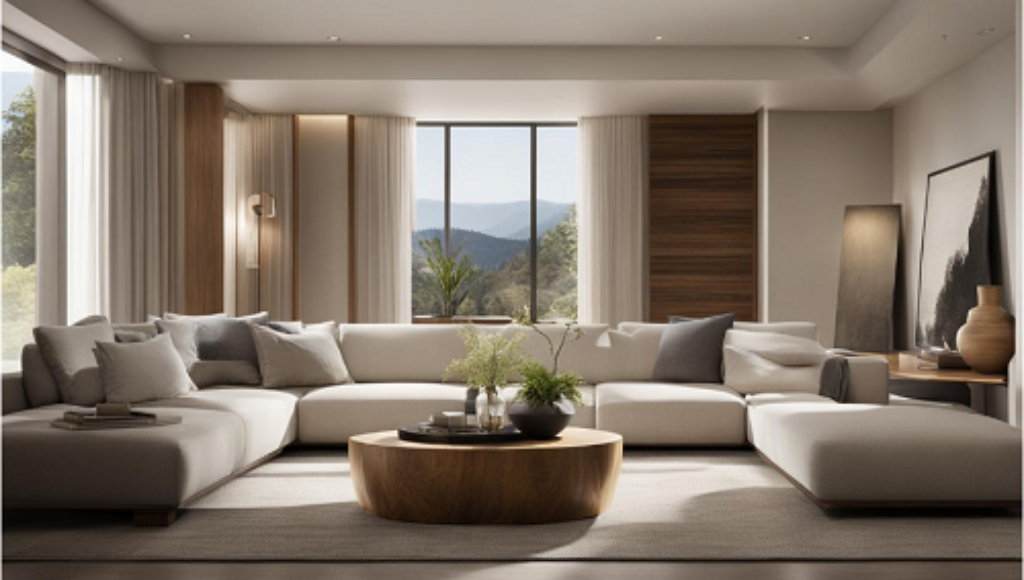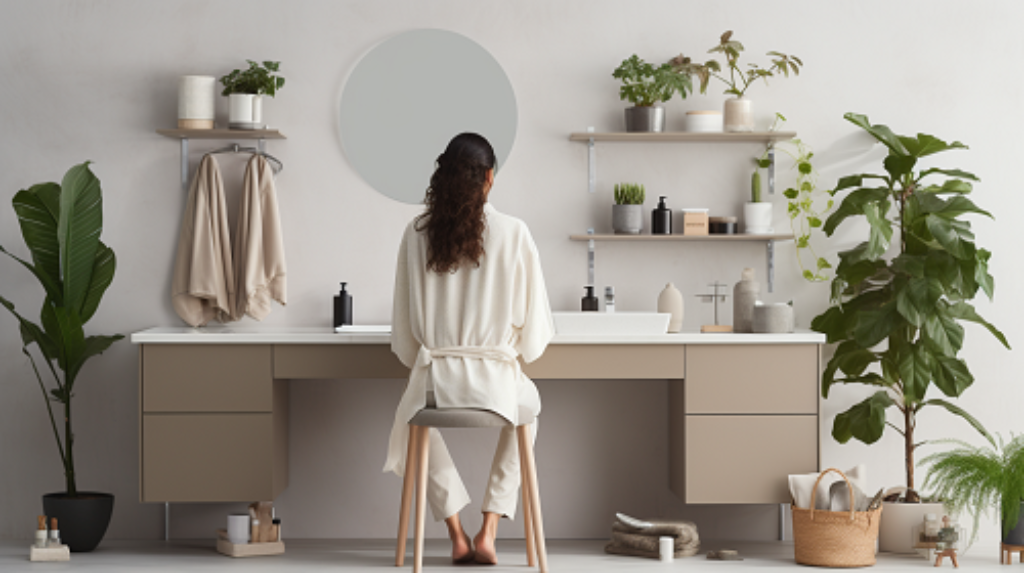Are you looking to reshape your living space into a sanctuary of simplicity and elegance? Look no further than minimalist interior design.
With its focus on uncluttered spaces, functional furnishings, and a visually appealing aesthetic, minimalism offers a timeless approach to home decor.
By embracing the philosophy of “less is more,” we can create spaces that exude beauty and tranquillity.
In this article, we will explore the key principles of minimalist interior design and provide practical tips for achieving minimalist elegance in your own home.
Key Takeaways:
- Minimalist interior design emphasizes uncluttered spaces and functional furnishings.
- The use of neutral colours creates a calm and unified aesthetic.
- Decluttering and effective storage solutions are essential in maintaining a minimalist space.
- Incorporating natural elements, such as wood or plants, adds warmth and texture to the design.
- Personalization and dispelling misconceptions about minimalism are key to creating a comfortable and inviting atmosphere.
Defining Minimalism in Interior Design
Minimalist interior design is a philosophy that focuses on creating uncluttered, functional, and visually appealing spaces. It is characterized by the use of simple lines, neutral Color palettes, and an unadorned aesthetic. The goal of minimalist design is to remove unnecessary elements and allow the core elements of the space to shine through.
By embracing minimalism, we can create a sense of calm and simplicity in our living spaces. The use of simple lines in furniture and decor helps to create a clean and organized environment. Neutral colors, such as whites, grays, and earth tones, contribute to a serene atmosphere and provide a timeless backdrop for any design style.
The unadorned aesthetic of minimalist design allows each element in the space to stand out and reveal its inherent beauty. By removing excess ornamentation and unnecessary clutter, we can create a space that feels open, airy, and inviting. Minimalist design is about creating harmony and balance by carefully selecting and curating the items in our space.

“Minimalism is not a lack of something. It’s simply the perfect amount of something.” – Nicholas Burroughs
Table: Elements of Minimalist Interior Design
| Element | Description |
| Simple Lines | Clean, straight lines in furniture and decor |
| Neutral Color Palettes | Whites, greys, and earth tones for a serene atmosphere |
| Unadorned Aesthetic | Minimal ornamentation and clutter-free spaces |
| Harmony and Balance | Carefully curated items for a cohesive look |
Minimalist interior design is a versatile approach that can be applied to various design styles. Whether your preference is modern, Scandinavian, or traditional, minimalism can enhance the elegance and sophistication of your space. By embracing simplicity and removing unnecessary elements, we can create a truly remarkable interior that stands the test of time.
With its emphasis on simple lines, unadorned aesthetic, and functional spaces, minimalism offers a refreshing approach to interior design. It allows us to create spaces that are both visually appealing and practical, without sacrificing comfort or style. So why not embrace minimalism and uncover the elegance it can bring to your home?
Key Principles of Minimalist Interior Design
When it comes to minimalist interior design, there are several key principles that can help create a space that is both visually appealing and functional. These principles include decluttering the space, embracing neutral colours, and choosing functional furnishings. Let’s explore each principle in more detail.
Decluttering
Decluttering is at the core of minimalist interior design. It involves removing unnecessary items from the space to create a clean and uncluttered environment. By eliminating clutter, you can create a sense of calm and serenity, allowing the core elements of the design to shine through. Effective storage solutions, such as hidden compartments or multifunctional furniture, can help maintain a clutter-free space.
Embracing Neutral Colours
Neutral Color palettes are a key element of minimalist design. They create a sense of calmness and unity in the space, allowing the focus to be on the essential elements. Shades of white, gray, beige, and earth tones are commonly used in minimalist interiors. These colors provide a timeless backdrop and can be complemented with small pops of color for added interest.
Choosing Functional Furnishings
Functional furnishings play a vital role in minimalist interior design. They should not only be aesthetically pleasing but also serve a purpose. When selecting furniture, focus on clean lines and simple designs that enhance the overall minimalistic aesthetic. Opt for pieces that maximize functionality and provide storage solutions, such as beds with built-in drawers or coffee tables with shelving.
| Principle | Description |
| Decluttering | Removing unnecessary items to create a clean and uncluttered space. |
| Embracing Neutral Colours | Using a palette of neutral colours to create a sense of calm and unity. |
| Choosing Functional Furnishings | Selecting furniture that is both aesthetically pleasing and serves a purpose. |
By incorporating these key principles of minimalism into your interior design, you can achieve a space that is not only visually appealing but also promotes a sense of tranquillity and simplicity.
Creating a Minimalist Aesthetic
When it comes to creating a minimalist aesthetic, there are several key elements to consider. One of the most important aspects is negative space. Negative space refers to the empty areas in a room that provide visual breathing room and allow the focus to be on the essential elements. By intentionally leaving blank wall space, empty countertops, or uncluttered surfaces, you can create a sense of calm and balance in your minimalist design.
Another way to enhance the minimalist aesthetic is through the careful selection of minimalist decor. Choose decor items that have a purpose and meaning, rather than simply adding to the visual clutter. This could include a statement piece of artwork, a carefully curated collection of books, or a simple vase with a single flower. Remember, less is more when it comes to minimalist decor.
Incorporating natural elements into your minimalist design can also add a touch of warmth and tranquility to the space. Consider incorporating materials such as wood, stone, or plants to bring a natural element into the room. Natural light is also essential in minimalist design. Maximize the amount of natural light that enters the space by keeping window treatments minimal and ensuring that windows are kept clean and unobstructed.
By balancing negative space, carefully selecting minimalist decor, and incorporating natural elements, you can create a minimalist aesthetic that is both visually appealing and serene. The key is to keep the design simple, uncluttered, and focused on the essential elements of the space.

Table: Elements of a Minimalist Aesthetic
| Key Elements | Description |
| Negative Space | Empty areas that provide visual breathing room and allow the focus to be on essential elements |
| Minimalist Decor | Decor items that have purpose and meaning, adding to the visual appeal without cluttering the space |
| Natural Elements | Incorporating materials such as wood, stone, or plants to bring a touch of warmth and tranquility |
| Natural Light | Maximizing the amount of natural light in the space to create a bright and inviting atmosphere |
Practical Tips for Achieving Minimalist Elegance
When it comes to achieving minimalist elegance in your home, there are a few practical tips that can help you create a space that is both stylish and functional. The first step is decluttering, which involves removing unnecessary items and creating a clean and organized environment. By decluttering regularly and minimizing possessions, you can create a sense of calm and openness in your space.
Personalization is another key aspect of minimalist design. While minimalism is often associated with stark and impersonal spaces, adding personal touches can actually enhance the overall aesthetic. Choose decor items that have meaning and purpose, and carefully curate a collection of items that reflect your personality and style.
There are also some misconceptions about minimalism that can be dispelled. One common misconception is that minimalism sacrifices comfort. However, minimalist design can actually create a more comfortable and inviting atmosphere by promoting a sense of calm and tranquillity. Another misconception is that minimalism means getting rid of everything. In reality, minimalism is about being intentional with your choices and only keeping items that bring value and joy to your life.
Table: Common Minimalism Misconceptions
| Misconception | Reality |
| Minimalism sacrifices comfort | Minimalism can create a comfortable and inviting atmosphere |
| Minimalism means getting rid of everything | Minimalism is about being intentional and keeping items that bring value |
| Minimalism is cold and impersonal | Personalization can enhance the overall aesthetic of minimalistic spaces |
“The ability to simplify means to eliminate the unnecessary so that the necessary may speak.” – Hans Hofmann
By following these practical tips and dispelling misconceptions, you can achieve minimalist elegance in your home. Remember to make decluttering a habit, personalize the design to reflect your personality, and create a comfortable and inviting atmosphere. Embracing minimalism can transform your space into a sanctuary of simplicity and timeless beauty.
Embracing Minimalism beyond Your Home
Minimalism is not just a design choice for your home; it is a lifestyle that can have a positive impact on your overall well-being. By embracing minimalism beyond your home, you can streamline your routines, reduce stress, and create a more mindful and intentional way of living.
One aspect of embracing minimalism in your lifestyle is streamlining your daily routines. By simplifying and organizing your schedule, you can create more time and space for the things that truly matter. This can include identifying time-wasting activities and eliminating them, prioritizing tasks based on their importance, and implementing efficient systems that help you stay organized.
In addition to streamlining routines, minimalism encourages mindful consumption and sustainability. This means being conscious of your purchasing habits, opting for quality over quantity, and reducing waste. By adopting a minimalist approach to consumption, you can not only save money but also contribute to a more sustainable future.
“Minimalism is the intentional promotion of the things we most value and the removal of anything that distracts us from it.” – Joshua Becker
One of the key benefits of embracing minimalism beyond your home is the reduction in stress. By decluttering your physical environment and simplifying your lifestyle, you create a sense of calm and clarity that can significantly reduce stress levels. A clutter-free space and a focused mind-set can help you feel more relaxed, cantered, and in control.
In conclusion, minimalism is not limited to interior design; it is a lifestyle choice that can enhance your overall well-being. By streamlining your routines, prioritizing mindful consumption, and reducing stress, you can embrace minimalism beyond your home and create a more intentional and fulfilling life.

Resources and Further Inspiration
When it comes to finding resources and inspiration for minimalist design, there are numerous options available. Whether you’re looking for books, blogs, or communities to connect with like-minded individuals, there’s something for everyone seeking to embrace minimalism in their lives.
Minimalist Design Books
If you’re a book lover, there are several recommended reads that delve into the world of minimalist design. “Minimalista” by Shira Gill offers practical tips for decluttering and creating minimalist spaces, while “Patina Living” by Chris Mitchell showcases the beauty of minimalist interiors with a rustic touch. For those looking for inspiration in creating a home that reflects their unique style, “Made for Living” by Amber Lewis is a must-read.
Minimalist Design Blogs
For those who prefer online resources, there are numerous minimalist design blogs that offer tips, ideas, and inspiration. Some notable blogs include “The Minimalists” by Joshua Fields Millburn and Ryan Nicodemus, “Becoming Minimalist” by Joshua Becker, and “Minimalism Made Simple” by Joshua Becker. These blogs provide insights into various aspects of minimalism, including decluttering, home organization, and incorporating minimalistic principles into different areas of life.
Joining Minimalist Communities
If you’re looking for a sense of community and support on your minimalist journey, joining minimalist communities can be a great way to connect with others who share your passion for simplicity. Online platforms such as Reddit’s r/minimalism and Facebook groups like “Minimalist Lifestyle” offer spaces to exchange ideas, ask questions, and learn from fellow minimalists. Engaging with like-minded individuals can provide inspiration, motivation, and a sense of belonging as you embrace minimalism in your life.
| Resource | Description |
| The Minimalists | A blog by Joshua Fields Millburn and Ryan Nicodemus, offering insights into minimalist living. |
| Becoming Minimalist | A blog by Joshua Becker, providing practical tips for embracing minimalism and decluttering. |
| Minimalism Made Simple | A blog by Joshua Becker, exploring the simplicity and freedom of minimalistic living. |
| r/minimalism | A subreddit dedicated to minimalism, where users share ideas, experiences, and resources. |
| Minimalist Lifestyle | A Facebook group for minimalist enthusiasts to connect, ask questions, and share ideas. |
Conclusion
Minimalist interior design offers a powerful approach to creating elegant, timeless spaces. By embracing the principles of minimalism, such as decluttering, embracing neutral colors, and choosing functional furnishings, you can create a space that reflects your unique style and stands the test of time.
Whether you’re starting from scratch or refining your current space, minimalism allows you to create a calm and sophisticated environment. Infuse your space with personal touches, experiment with different elements of minimalist design, and let your creativity shine.
With minimalist interior design, you can achieve a sense of timeless elegance that will enhance your living space for years to come. So, embrace the beauty of simplicity and embark on a minimalist journey that will transform your home into a sanctuary of minimalist elegance.
FAQ
What is minimalist interior design?
Minimalist interior design focuses on creating uncluttered, functional, and visually appealing spaces through the removal of unnecessary elements and embracing a simple aesthetic.
What are the key principles of minimalist interior design?
The key principles of minimalist interior design include decluttering the space, using neutral color palettes, choosing functional furnishings, and implementing effective storage solutions.
How can I create a minimalist aesthetic?
You can create a minimalist aesthetic by balancing openness and coziness, choosing minimalist decor items with purpose, incorporating natural elements, maximizing natural light, and selecting minimalist light fixtures.
What are some practical tips for achieving minimalist elegance?
Practical tips for achieving minimalist elegance include making decluttering a habit, identifying clutter traps to avoid, adding personal touches that complement the design, and dispelling common misconceptions about comfort in minimalism.
How can I embrace minimalism beyond my home?
You can embrace minimalism beyond your home by streamlining your daily routine, practicing mindful consumption and sustainability, and recognizing the impact of a clutter-free environment on stress reduction and mental clarity.
Where can I find resources and further inspiration for minimalist design?
Resources and further inspiration for minimalist design can be found in recommended books on minimalism, minimalist design blogs and websites, and joining minimalist communities for sharing experiences and finding support.
Discover more about Home Decor


